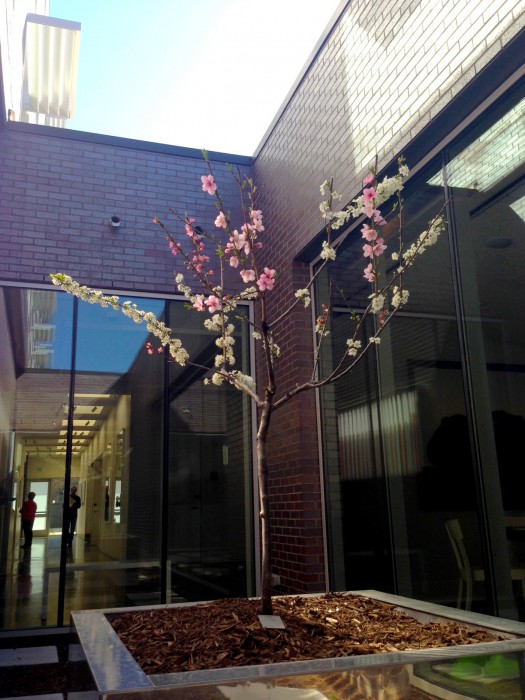Having one of Sam Van Aken’s horticultural creations in your backyard is a great way to start conversations about our impact on biodiversity—and seriously step up your fruit salad game.
A single tree that bears a different fruit on each branch—the idea seems mythical, almost biblical. But Sam Van Aken, an art professor at Syracuse University, has realized this fantasy in his art, research, and conservation project, entitled “Tree of 40 Fruit.”
The idea took root when Van Aken discovered the New York State Agricultural Experiment Station in Geneva, NY. The station had an orchard containing hundreds of antique, heirloom, and native varieties of stone fruits, which are fruits containing pits in the center such as peaches, apricots, plums, cherries, and nectarines. These varieties originated in New York’s past as one of the largest producers of stone fruits. Nowadays, that role is taken by California, and commercial growers have discarded that huge variety in favor of monocultures that prioritize shelf life and appearance over taste. The orchard at the Agricultural Experiment Station was the only place to find some of these rare subspecies.
So when Van Aken heard that a lack of funding was threatening the orchard’s continuation, he took action. In a 2014 TEDx talk, he stated, “I grew up on a farm, but I hadn’t really thought about farming for about 20 years, until I found out they were going to tear this orchard out. And for some reason I felt that it was a tragedy.”
 |
He rescued the orchard from its fate and decided to use the varieties of stone fruits in a project that would transubstantiate the banal fruit tree into an object of wonder. Each tree of 40 fruit takes at least five years to create: in the spring, Van Aken begins by cutting pieces of branches containing healthy buds off trees bearing the fruit varieties. He saves these cuttings, called scions, until summer, when he grafts them into incisions made on the parent or rootstock tree. The following spring, he prunes back the buds surrounding the graft, so that the rootstock directs all nutrients to the grafted buds. If all goes well, the grafted branches will bloom and bear fruit.
Van Aken repeats this process for each variety, following careful planning and diagrams so that they all blossom at once to create a riot of pink, red, and white. It’s a hugely time- and labor-intensive endeavor, but for Van Aken, the pay-off comes when people are inspired by seeing an entire orchard condensed to a single tree.
He explains what the project means to him in his TEDx talk: “As an artwork, it interrupts and transforms the everyday. As a research project, it creates one of the first comprehensive timelines of when all these varieties blossom in relationship to each other, which becomes important when we consider pollination. And finally as a form of conservation, by taking all these heirloom, antique and native species, grafting them onto the trees of 40 fruit, then placing them throughout the country, in some way I am creating my own type of diversity and preservation.”
So far, 16 trees have been planted across the country, with another planting planned for this fall at the Children’s Discovery Museum of San Jose. Van Aken tailors each tree to its destination by choosing a rootstock native to the area and more likely to thrive. Going forward, he hopes to develop groves of trees planted in urban settings, as a way to increase the area’s biodiversity, reconnect city dwellers with food production, and provide locals with tasty and unique fruits.
Watch more: youtu.be/t9EuJ9QlikY








Facebook comments